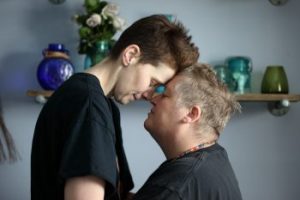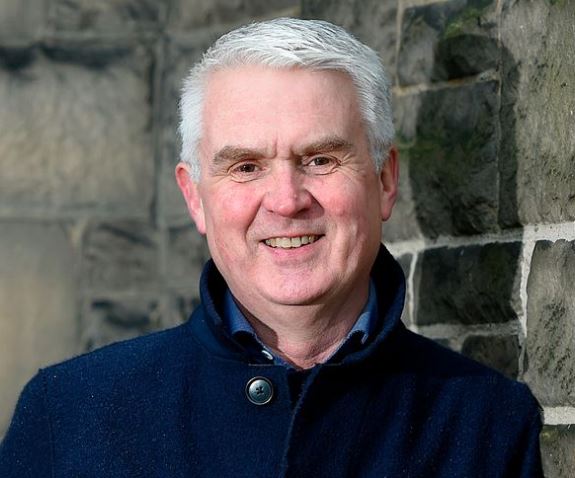 An apparent stalling in the pace of liberalisation on attitudes to same-sex relationships and a welter of angry protest about LGBT inclusive education in schools provide a sharp reminder of the need to re-double and re-focus our efforts in the battle for equality. And as we look forward it’s worth looking back.
An apparent stalling in the pace of liberalisation on attitudes to same-sex relationships and a welter of angry protest about LGBT inclusive education in schools provide a sharp reminder of the need to re-double and re-focus our efforts in the battle for equality. And as we look forward it’s worth looking back.
In 1987, my late partner and I bought a terraced house in Hackney which was to be our home until he died in 1995. We’d been together for two years and he’d been diagnosed with HIV the year before we met.
His diagnosis was an early one in the UK and it was tough — for him and for us. We’d met at a trade union lesbian and gay conference, both of us, me in particular, gay rights activists. Given how little time we might have, buying a house together was a leap of faith.
The house was a handsome late Victorian property on a quiet tree-lined street. We were lucky to be able to buy it but it was unremarkable enough (albeit these days it’s worth tenfold what we paid for it). But there we were, in an unremarkable house on an unremarkable street.
But we were not an entirely unremarkable couple — because we were both men. And in 1987 that was far more unusual than it would be today. We didn’t shout about our sexuality on the street but who and what we were was plain enough.
Our neighbours were a mixed bunch in terms of class, age and ethnicity. Everybody rubbed along without fear or favour. And when his health deteriorated visibly during the ensuing years, the cause of his infirmity was obvious enough too — and they looked on compassionately.
It’s odd to look back and reflect that all this took place against the backdrop of a society were attitudes to same-sex relationships were far from accepting. And they had been on the decline during the previous four years in no small part due to the arrival of AIDS and the fear it stoked up.
When the British Social Attitudes survey reported later that year, just 11% of people thought same-sex relationships were ‘never wrong’, with another 10% saying they were ‘rarely’ or ‘sometimes wrong’.
It would be a reasonable supposition to refer to the first group as ‘accepting’ and the second group as ‘tolerant’, which meant that the remaining three-quarters of people were neither.
Even allowing for the fact that we lived in London, in up and coming Hackney, where attitudes may have been more liberal, all in all it was a pretty hostile environment. And it’s reasonable to assume that many of our neighbours were neither accepting nor tolerant.
By the time he died, attitudes were liberalising again. In 1995, the figures for accepting (never wrong) and tolerant (rarely or sometimes wrong) had risen to 17% and 22% respectively. Bit by bit, Britain was becoming more enlightened.
We had fought back against the tide of homophobia that came with AIDS and against Section 28, enacted in 1988. Ours wasn’t a fashionable cause in those days, but we were indefatigable and, slowly, we were winning.
And though the evidence is more anecdotal, I think it’s reasonable to assume that some of those who became more liberal were the very people who lived on our street — precisely because they became accustomed to the ordinariness of having gay neighbours.
The British Social Attitudes survey provides an invaluable evidence base of the extent to which attitudes have changed but it doesn’t provide insight into why. There, the evidence is sparser and we’re left to speculate.
As a gay man who has lived through the change we have witnessed and been involved as activist, researcher and commentator for the last four decades, I think attitudes have shifted in part because of unstinting campaigning. Having given up much of my 20s and 30s to doing just that, I need to believe it.
But there’s no doubt the biggest difference has occurred closer to home. As our campaigns created the conditions in which people were able to come out, so the stories told in families and communities — like our street in Hackney — changed hearts and minds.
In the end, everyone knew someone — a family member or friend who was lesbian, gay or bisexual — and the idea of same-sex relations became normalised.
Families stopped casting us aside and started to embrace us for who we were. We stopped running away from the communities we’d grown up in and started, in ever greater numbers, staying put and making a life for ourselves right where we were.
The high water mark – so far – in terms of acceptance was 2018 — 68% of people thought that same-sex relationships were not wrong at all. Yesterday, as widely reported, the figure fell to 66%, the first decrease since the 1980s.
It’s not a statistically significant fall and the scorecard is balanced at the other end of the spectrum where the proportion of those who think same-sex relationships are ‘mostly’ or ‘always wrong’ has also fallen by 2%.
However, some commentators have said this ‘plateau’ may suggest we’ve reached the limits of progress. Others have suggested that liberals have taken progress for granted. I’m not so sure — on either count.
We — myself included — have grown used to celebrating. But I’ve never tired of saying that the remarkable change we have witnessed — the rise in acceptance by 50 percentage points in 25 years — didn’t happen by accident — and that we’re not there yet.
We know from the data for previous years that a number of factors are at play in resistance to progress — age, educational level and religious belief, in particular. This year, among people who identify as ‘other Christian’, 28% think lesbian and gay relationships are ‘mostly’ or ‘always’ wrong, and among people who identify with non-Christian faiths, that rises to 43%.
It’s also worth mentioning, as other commentators have, that the latter group has risen as a proportion of the population in recent years. But it would wrong to assume that attitudes in those communities can’t or won’t change.
The liberalisation of attitudes amongst those identifying as Anglican and Catholic (groups which are getting smaller) provides a significant clue here. While change has lagged behind the population at large, it has steadily happened — mostly at odds with religious hierarchies. Even in those communities, as people have been able to come out, the narrative has changed.
Change in any sphere gets harder at the business end. The low hanging fruit has been picked leaving hard nuts to contend with. The great thing about the British Social Attitudes survey is that it tells us where we need to focus our efforts.
So the importance of LGBT inclusive education in schools — where we have a head start in Scotland — and of promoting dialogue with, and among, faith communities will be paramount. Progress is not simply about generational change — and therefore is not a given.
But it isn’t unattainable either. It just got a bit harder, not least for those growing up gay in Muslim households in the shadow of protests around inclusive education. We owe it to them — and those who came before — not to give up.
Lauding progress in previous years, we’ve rightly focused on those whose acceptance has been won. It’s now time to turn the tables and focus our efforts on those who are resistant, for whatever reason, to change. We need to listen, persuade and most crucially provide support to LGBT people who are most isolated.
Change has never been inevitable — but it’s always been attainable. We’re not there yet.
